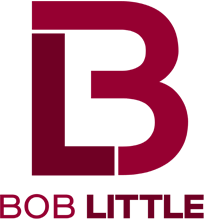For those who’re not too sure of their acronyms, ‘DITA’ stands for the Darwin Information Typing Architecture, Learning & Training specialization. It’s a relatively new structured content XML format for producing online and instructor-led training and documentation materials.
The standard is issued by OASIS, the US-headquartered global consortium for open standards in the Information Society. OASIS aims to encourage the convergence of technical and training documentation within engineering and process orientated industries, such as the machine plants, semiconductor, automotive, financial, pharmaceutical, translation and defence industries.
Today’s instructional authors, designing technical training sessions within large engineering, manufacturing and process based industries, need to cope with some 90% of their input materials coming from disparate sources within their organisations. Typically, these include the product and plant engineering, design and marketing departments – all of which use different content packaging and exchange standards (for example, DocBook, ePub, IETM and/or S1000D).
All of these differ from those standards commonly used within learning/ training tools and platforms – such as SCORM, IMS and AICC content packaging and tracking interchange formats. Up to now, the lack of a common interoperability format across the technical documentation, training platforms and tools has limited the type of documents that training departments could receive as input from their technical counterparts to Word, PDF and HTML, for example.
Yet – to compete successfully in contemporary markets, reaching their workforce where and when they need field training and performance support – there is a need to create compelling training materials able to deal with the increasing complexity and blending of technical training formats, from instructor-led sessions to web-based training, mobile learning and so on.
The ‘cut and paste’ approach has been the most commonly used approach to producing technical documentation for online training delivery. This has resulted in high levels of content replication, low levels of content re-use and extremely high costs in engaging subject matter experts (SMEs) within never-ending proof-reading cycles.
All those engaged in designing training for new products and processes around the world have experienced high levels of inefficiency in online training design. So they’ve been looking for an improved interoperability format to allow them to exchange contents among the diverse and dispersed knowledge hubs within their organisations more easily.
The DITA Learning & Training specialization addresses this gap and brings new life to content interoperability across and within large organisations dealing with massive and rapid technical documentation and training materials production flows.
To help to draw attention to the DITA standard, exact learning solutions is running a series of webinars, workshops and closed DITA seminars for content strategists within large organisations. The next workshop is scheduled to be held in Utrecht, in The Netherlands, on 7th June, and is connected with the DITA Information Energy 2012 conference.
The most recent webinar – scheduled for 23rd May at 11am US Eastern Time, 10am US Central Time, 8am Pacific Time, 4pm BST and 5pm Central European Time – will explain the need for new generation structured content management standards and the benefit of adopting DITA. Delegates will also learn how DITA compares, and can be integrated with, other existing learning content formats such as SCORM Content Packaging and IMS Common Cartridge.
Places at the webinar are free but limited and granted on a ‘first come first served’ basis. To request a seat at the webinar, visit: http://gnstx.gr/eEX
For further details of eXact learning solutions’ DITA-related events,, send an email to m.leikas@exactls.com
Further details of DITA can be obtained from www.oasis-open.org/committees/dita/






[…] DITA XML content standard update | Bob's Blog Uncategorized by admin […]